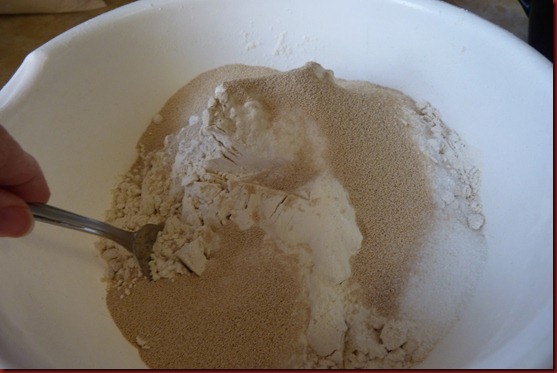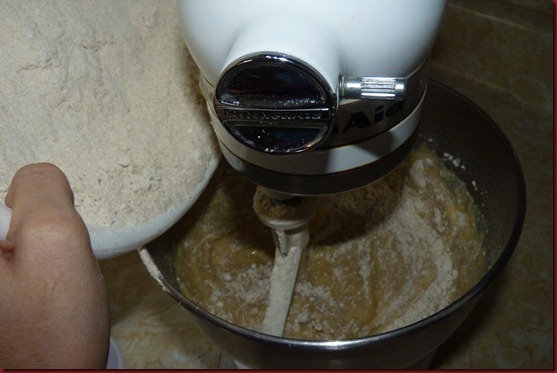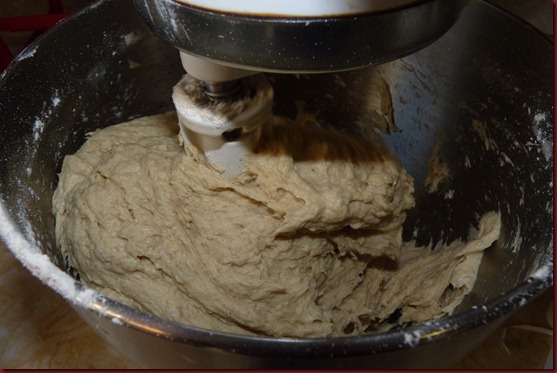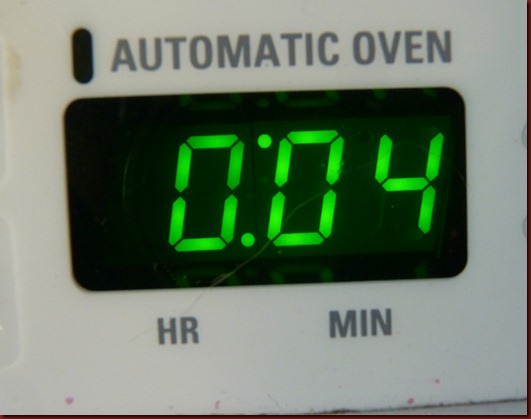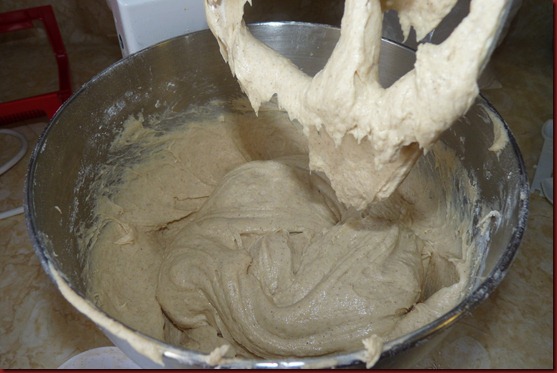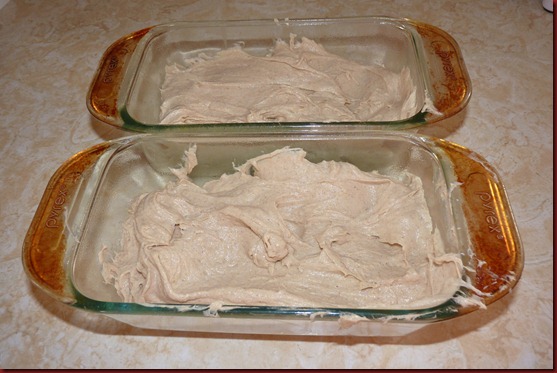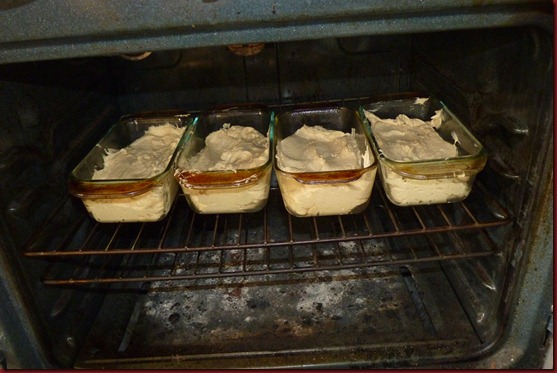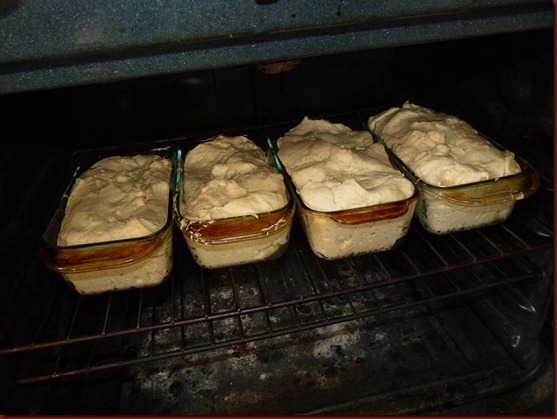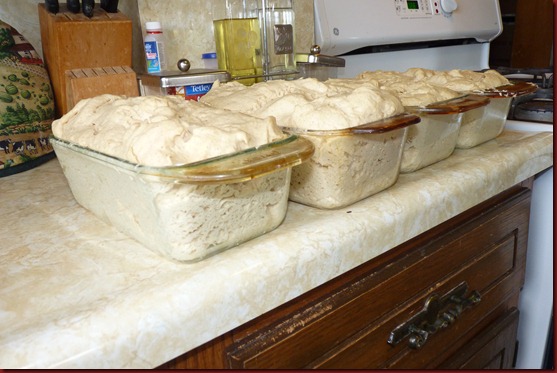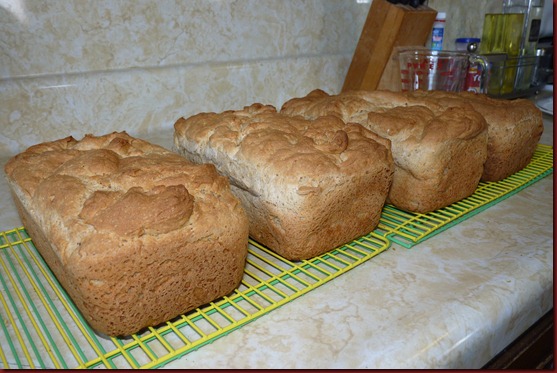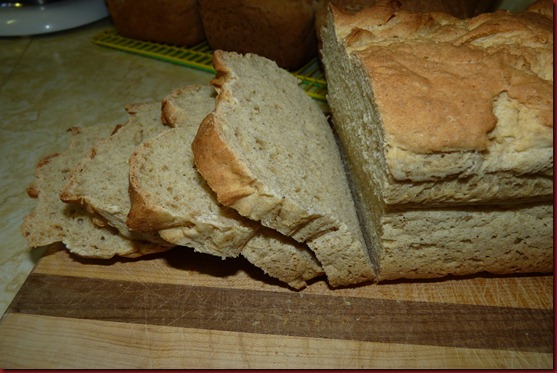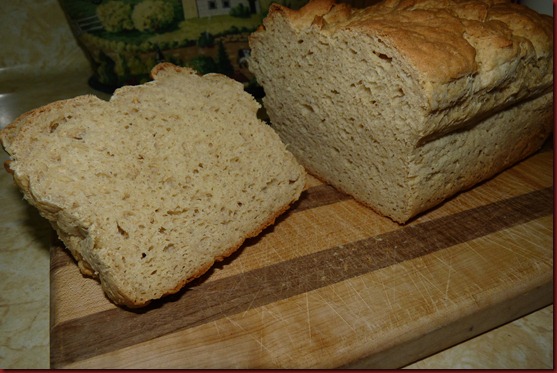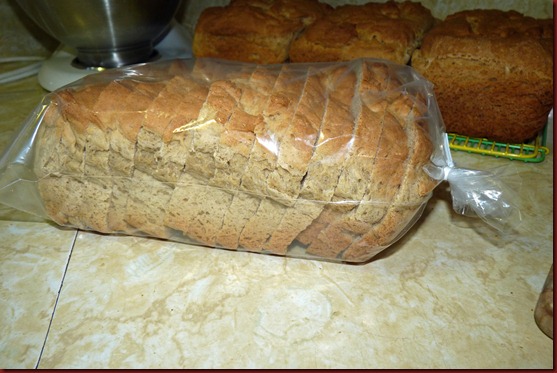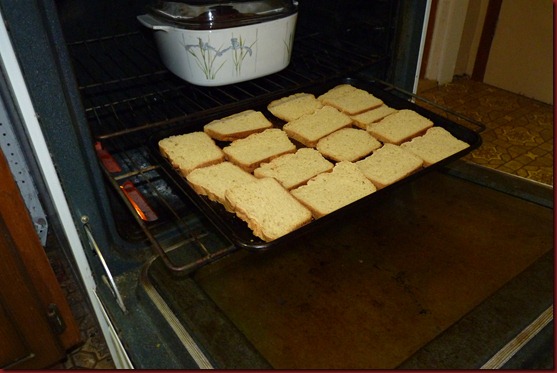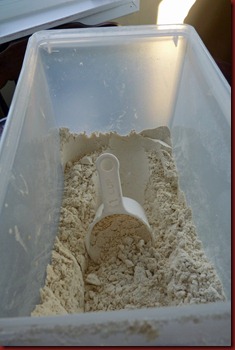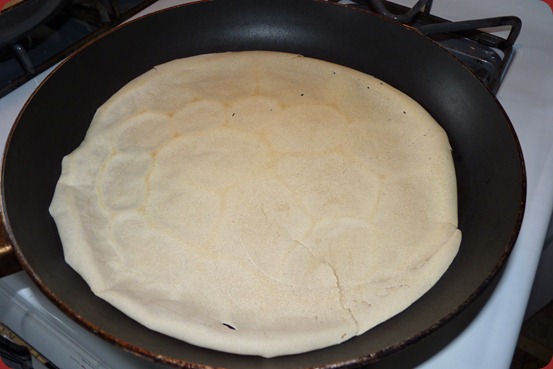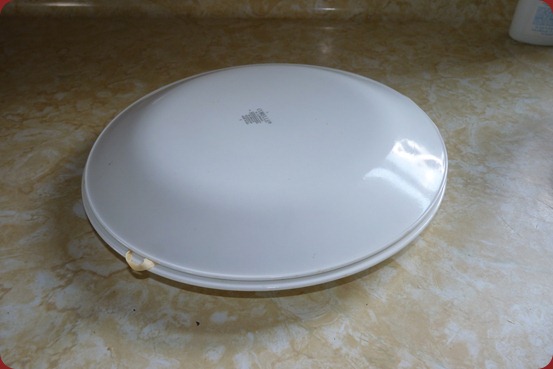So now that I’ve posted my GF mix I can post the GF bread that we use. Since I used to make all my own bread we surely do miss the homemade bread coming out of the oven and eating it still warm, melting in your mouth. We will eat GF bread out of the oven, but it’s just not the same.
GF bread is always best the day it’s made. While some GF breads need to be eaten right away I do find that this recipe will last 2-3 days before it’s dried out and needs to be toasted. So in that way it’s a good thing. Since we have a good wrap recipe we tend to gravitate to them and not eat bread that much, but we do use the GF bread more for toast, like eggs and toast, french toast, or grill cheese. As far as GF breads go this one is delicious. Every now and then I need to remind myself how excited I was when I found this recipe as we thought it was just delicious after trying various other not so delicious GF breads. I guess the reality is that we haven’t stopped grieving the loss of real bread yet … but eventually we will get over it and just accept this as our new bread and our new way of life.
Gluten Free Sorghum Bread (makes 14-16 slices)
Dry Ingredients:
- 2 1/8 cups GF Mix
- 3 tbsp sugar (this is a bit more then I’d like to see in bread, you can reduce it, but we find the bread is drier then)
- 1 tbsp xanthan gum
- 1 tbsp instant yeast
- 1 1/4 tsp salt
Wet Ingredients:
- 2 eggs
- 1 egg white
- 1 cup water
- 2 tbsp vegetable oil
- 1 tsp white vinegar
Optional:
- For raisin bread add cinnamon to the dry mix and after you have mixed the dry ingredients into the wet ingredients add 3/4 cup raisins (if tolerated).
Instructions:
In a large bowl mix together the dry ingredients. Stir well to make sure the xanthan gum has been well distributed. Set aside.
In another bowl with an electric mixer mix together the wet ingredients with a paddle and not a bread hook as you would with wheat bread.
With the mixer on low slowly add in the flour mixture
Continue to mix until it is well combined, if necessary scrap down the sides with a spatula. It should be the consistency of a thick batter.
Turn your mixer to medium speed and beat the batter for four minutes.
After four minutes the batter should appear smoother and thinner.
Pour the batter into a greased loaf pan. ( I usually do a double batch since this bread freezes well.)
Now the loaf needs to rise. Place it uncovered in a draft-free place. I usually put it in my oven. I will turn my oven to 200F and let it start to preheat for 2 minutes and then turn it off. This makes a nice warm place for the bread to rise. (My mixer cannot do four loaves at a time, but I will do two batches of two loaves right after each other … I figure if I have all the stuff out I might as well make it worth the mess)
Let the bread rise for 30 minutes, or until it reaches the edge of the pan … if you do not use the oven this may take closer to 60-75 minutes.
Since I let the bread rise in the oven this means that I need to remove it to preheat the oven. This is why I usually check the bread after 30 minutes to see how it’s doing. It can continue to rise on the counter (although at a slower pace) while I wait for the oven to preheat. You will note that two loaves are larger, this is because they were the first batch I made. If there is a noticeable different then I will start baking the first two loaves and place the second two in about 10 minutes later. Since there is no gluten in this bread it can only rise slightly over the top of the loaf pan, if it rises to far it will flop over and start running down the sides as the xanthan gum is not strong enough to hold it together like gluten does.
Preheat the oven to 350F and once it is heated place your bread in oven for 35-45 minutes (this fluctuates from one oven to the next). Remove the bread from the bread pan as soon as possible. I do find it does not always shake out right away after taken from the oven, but if I leave it in the pan for about 5-10 minutes it will gather some moisture and loosen up. Otherwise, carefully scrap a knife along the edges to loosen it. Cool completely on rack (or eat warm).
You now have a nice moist loaf of gluten free bread. Slice it up and enjoy it.
We will also slice the loaf and put it in the freezer, that way we can take out slices as we need them. We do find that bread that comes out of the freezer tastes is drier and better as toast … but since we use GF bread mostly for toast (and Crepes/Wraps instead of bread) this works fine for us.
Or … you can slice it and put it in the oven to dry it out and make bread crumbs. Usually I use the ends of the bread or “old” dried out bread for this, but sometimes I’m low on bread crumbs and need to just make a couple loaves into crumbs.
Enjoy!
